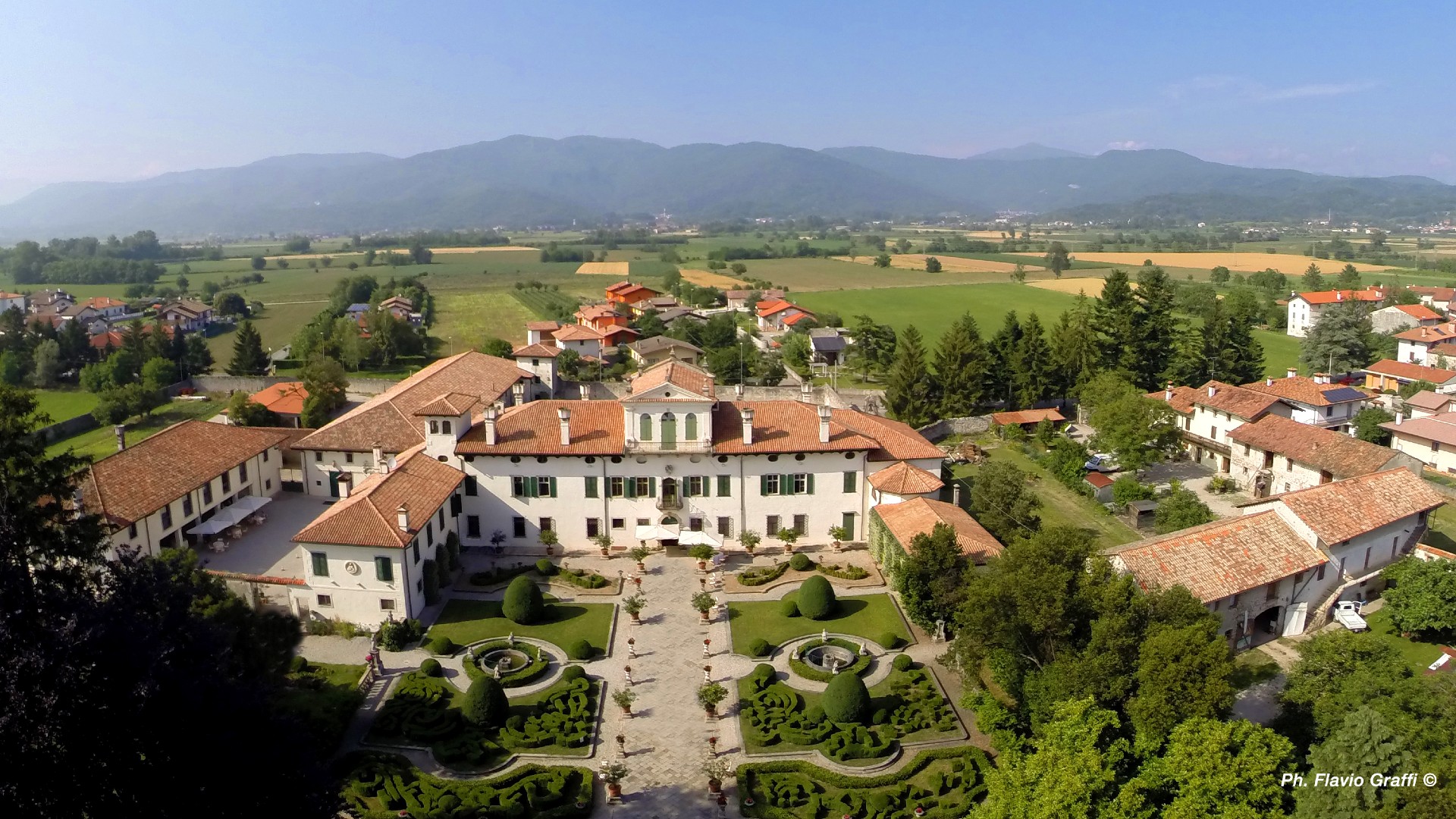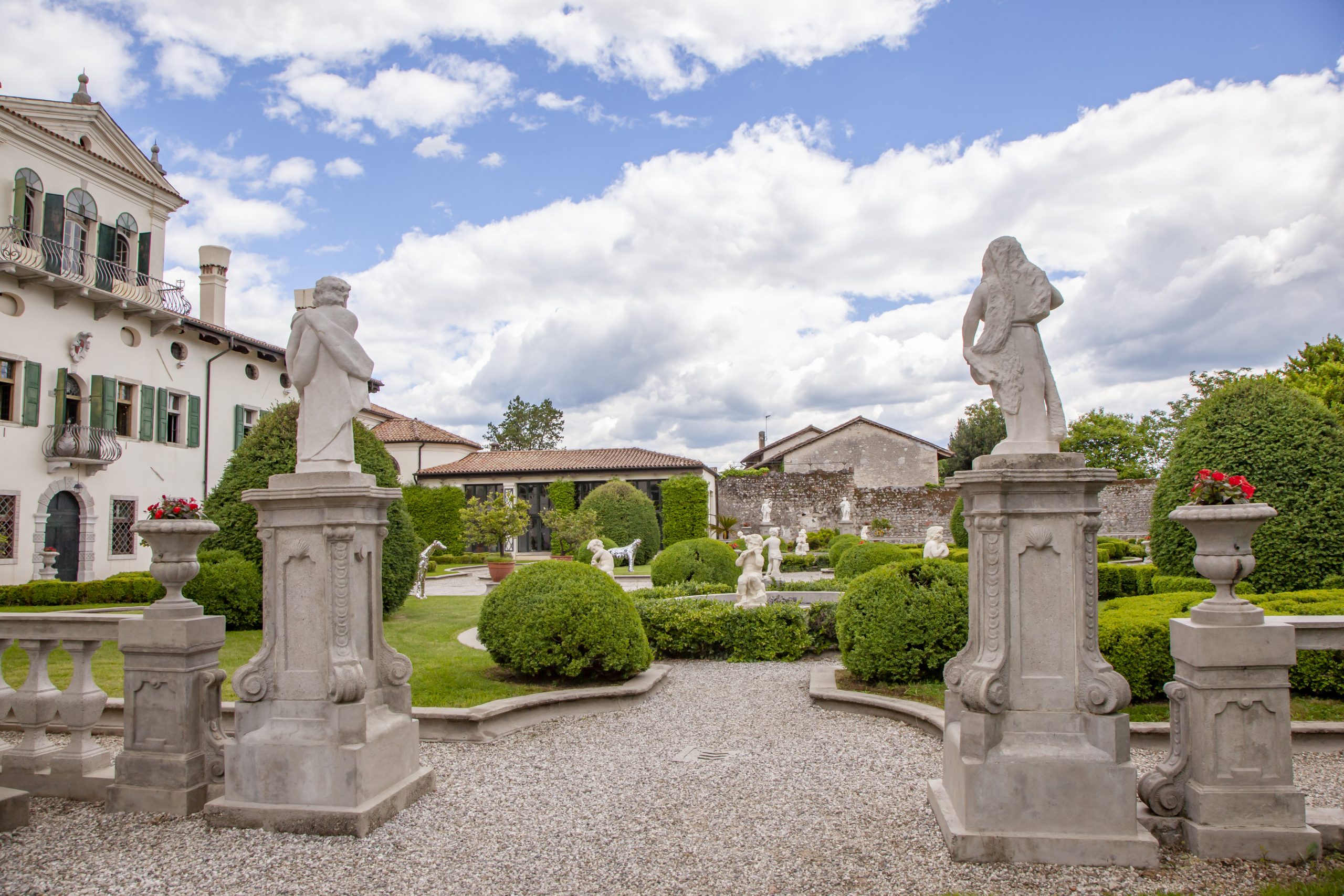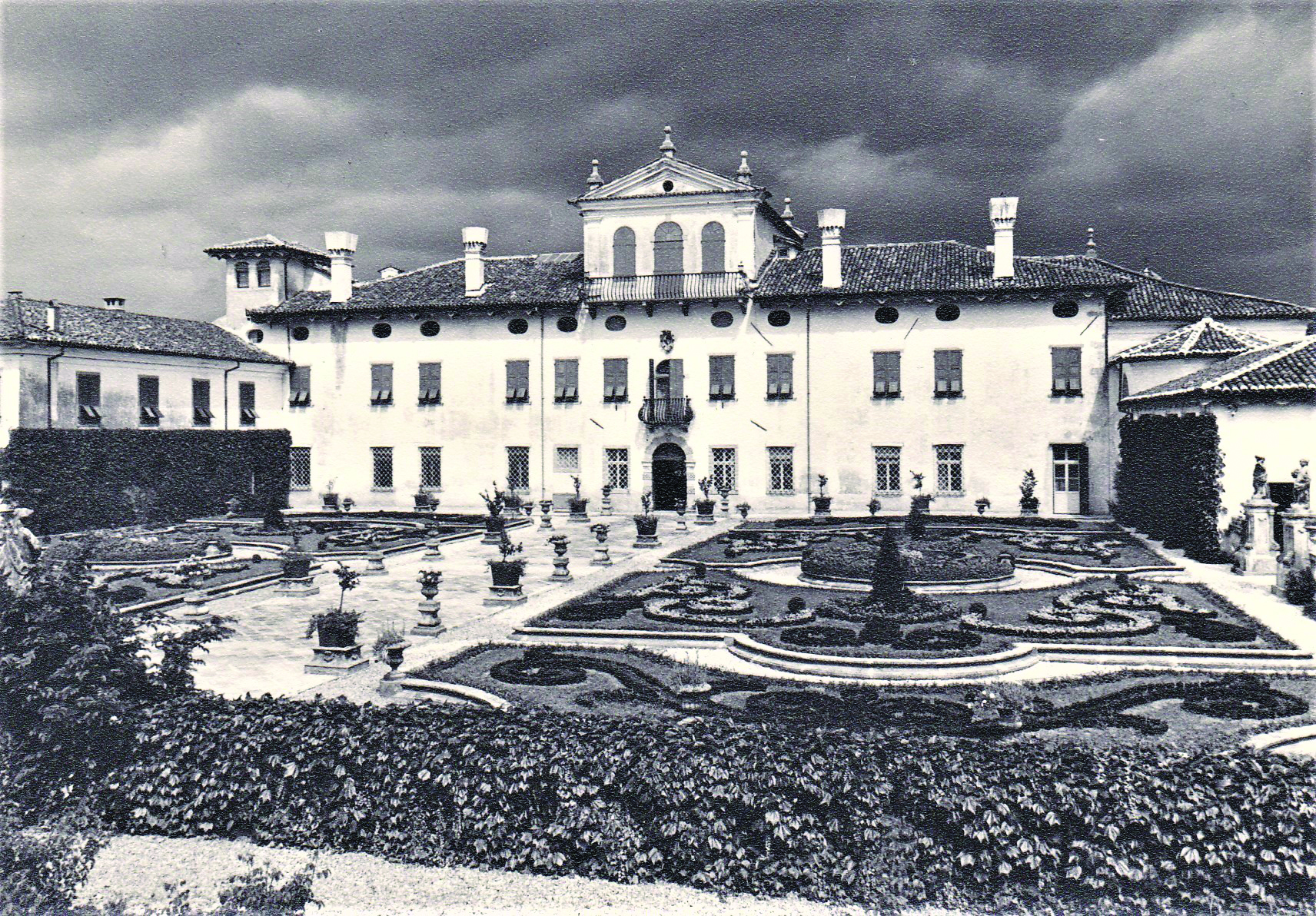The Italian Garden

The Italian Garden and the Baroque Tradition
In 1908, Nicolò Claricini Dornpacher redesigned the Italian-style garden that extends along the south side of the villa. While the north side, with its façade and square courtyard, has a more austere appearance, the south façade and the adjoining garden are distinguished by their elegance and harmony. This green corner, nicknamed the ‘ secret garden’, was reserved exclusively for the pleasure of the family and intimate guests. Enclosed by a refined Vicenza stone balustrade, which accentuates the intimate and cosy atmosphere, the garden presents itself as a small refuge, protected from the outside world.
Marking the main access points and adorning the garden, eight pillars decorated with Baroque motifs and surmounted by statues of mythological deities rise delicately.
These pillars are strategically placed: around the fountains, near the greenhouse and on the border leading to the English garden behind.
The 18th Century Taste of Nicolò Claricini
When Nicolò decided to redesign the garden, Europe was experiencing the Belle Époque period, during which the modernist expression of Art Nouveau predominated. However, Nicolò felt more in tune with ‘ settecentrism, a style that echoed the tradition of the gardens of the court of Louis XIV, the Sun King. The garden was inspired by the decoration of the parterre de broderie, characterised by symmetrical flowerbeds separated by gravel paths and stone borders or small hedges. The intricate plant embroideries created by pruning the hedges reflect an ornamental taste typical of the period.
While remaining faithful to a historicist taste, Nicolò did not neglect new technological innovations. The use of artificial stone, a novelty at the time, was an important choice. Its appearance, linked to the spread of Portland cement in the 19th century, made it possible to reproduce the appearance of natural stone in a cheaper and more durable manner. Artificial stone became popular, even in Friuli, where local companies such as Tonini and Gerolamo D’Aronco – father of architect Raimondo – contributed to its spread.
The Flowerbed Design and Symmetry
A fascinating element in the garden is the design of the twin flowerbeds, which breaks with the rigidity of the traditional square pattern. The sinuous and dynamic course of the flowerbeds is enhanced by elegant artificial stone borders that delimit the sections. In the centre of each section is a circular fountain, adorned with four statues of putti arranged according to the cardinal points. The greenery that fills the spaces enclosed by the stone borders is composed of grass carpets, box hedges modelled in elegant curves and small trees pruned in the shape of spheres, creating a fascinating visual interplay between horizontal and vertical forms.

This geometric subdivision of space, typical of the Italian garden, is expressed in rows of trees, well-tended hedges and plant sculptures created by the art of pruning (ars topiaria). This style has deep roots in the Renaissance, when the garden became a place not only for cultivation, but also for pleasure and relaxation. It was a natural evolution of the medieval hortus conclusus, originally intended for the cultivation of fruit, vegetables and medicinal plants.
Boxwood Borer Control and Restoration
Over the years, the garden has been damaged by the boxwood borer (Cydalima perspectalis), an invasive insect that has challenged the boxwood plants, threatening the health of the hedges and plant sculptures. To counter this problem, the park’s redevelopment and restoration work opted for the Japanese holly Convexa, a hardy hedge plant similar to boxwood. The Convexa, with its slow growth and compact habit, proved ideal for maintaining the garden’s original aesthetics.
Thanks to these interventions, the garden regained its original design, which had been immortalised in Attilio Brisighelli’s photographs from 1923. These images, taken at the request of Count Nicolò, documented the villa’s newfound splendour after the difficulties faced during the war period.

